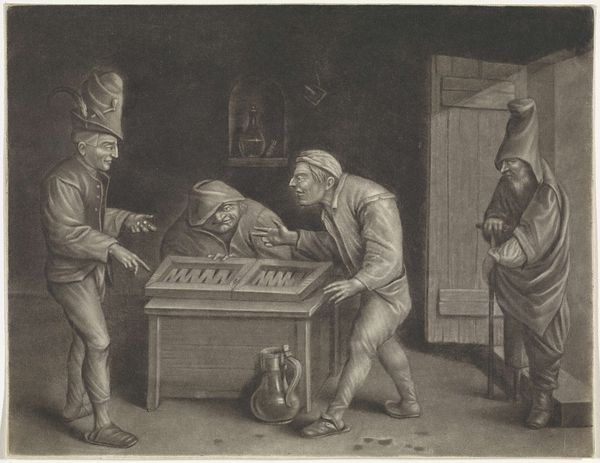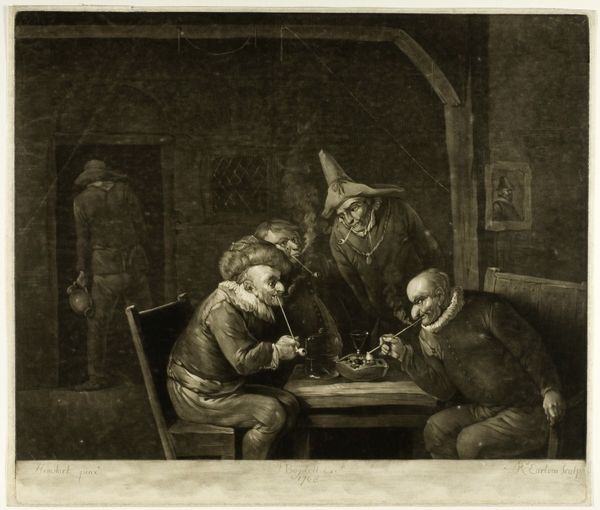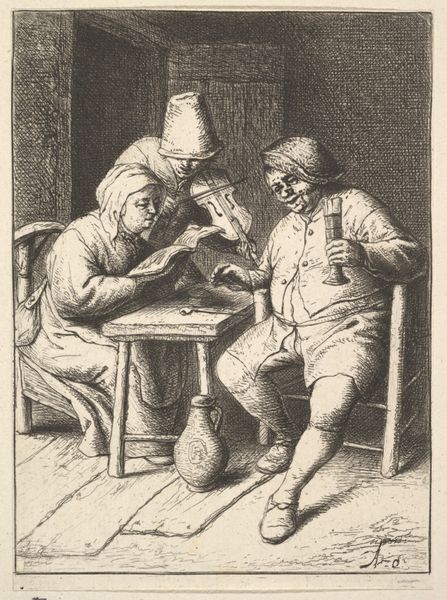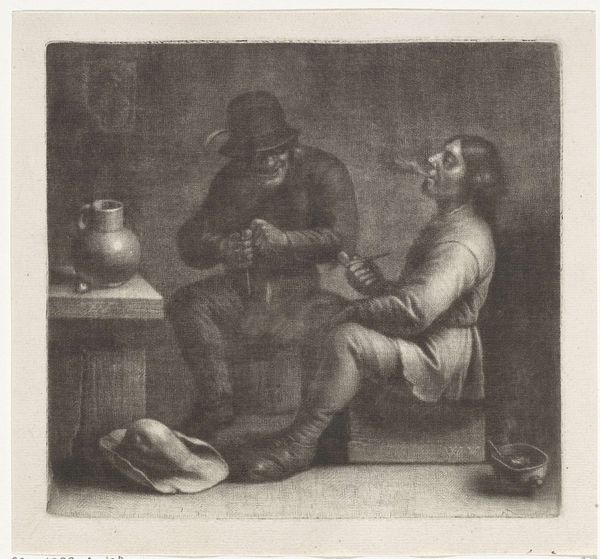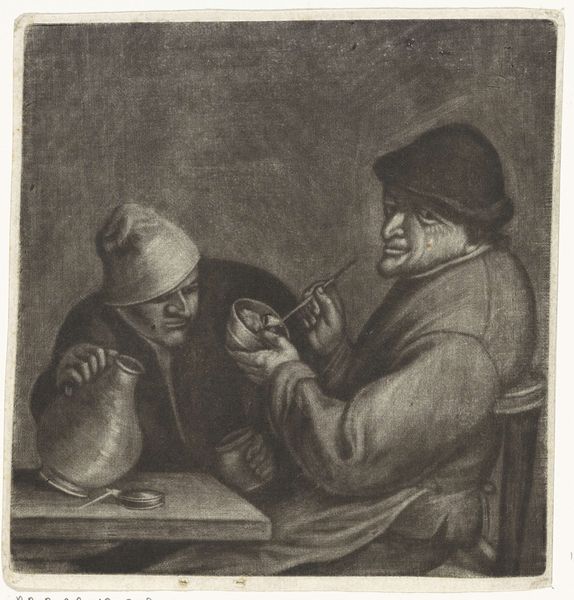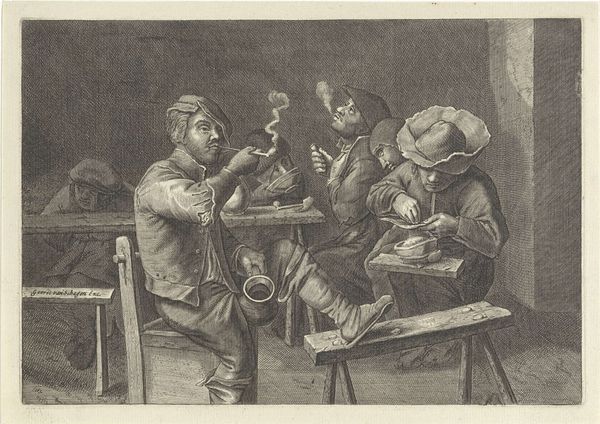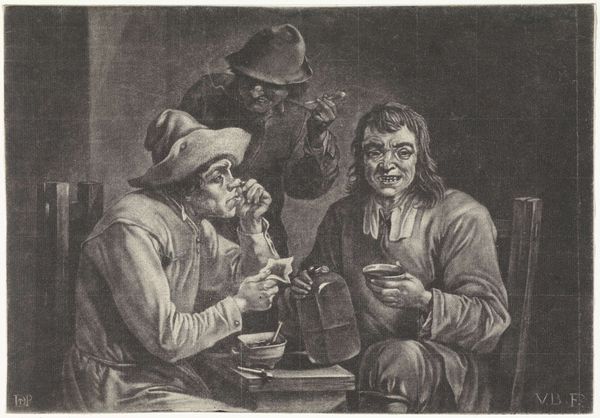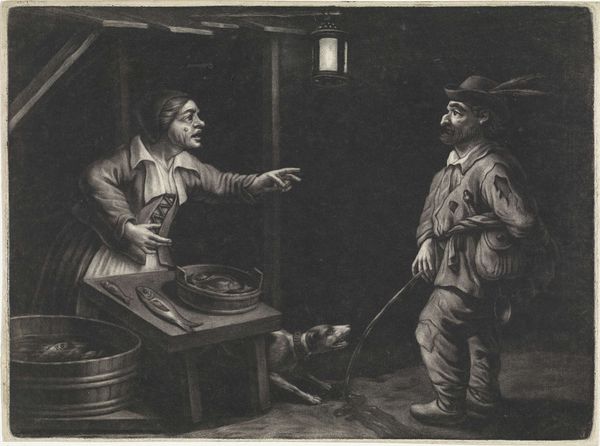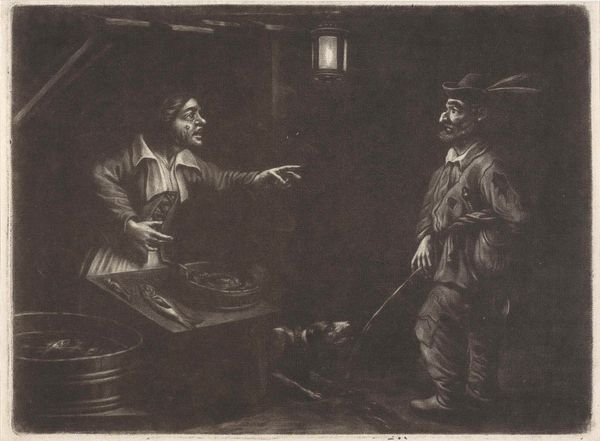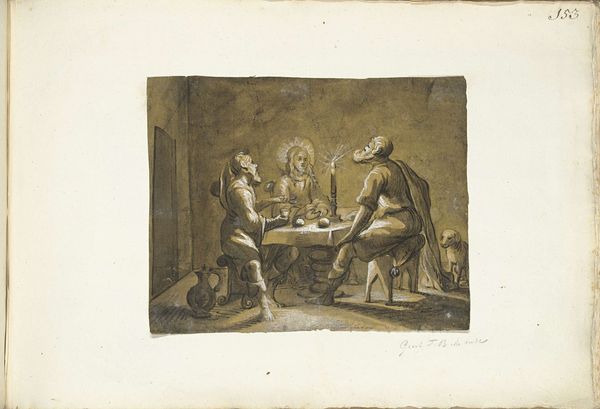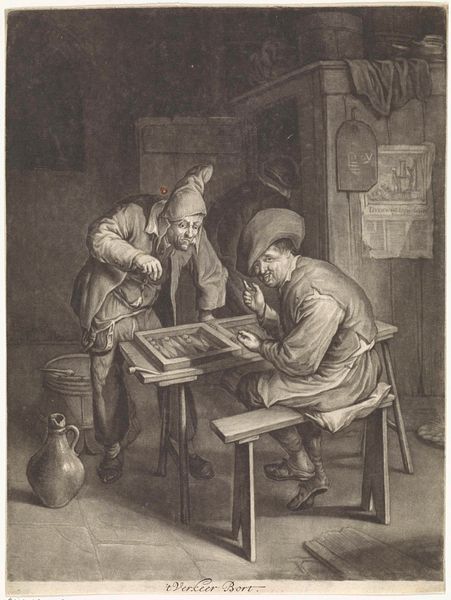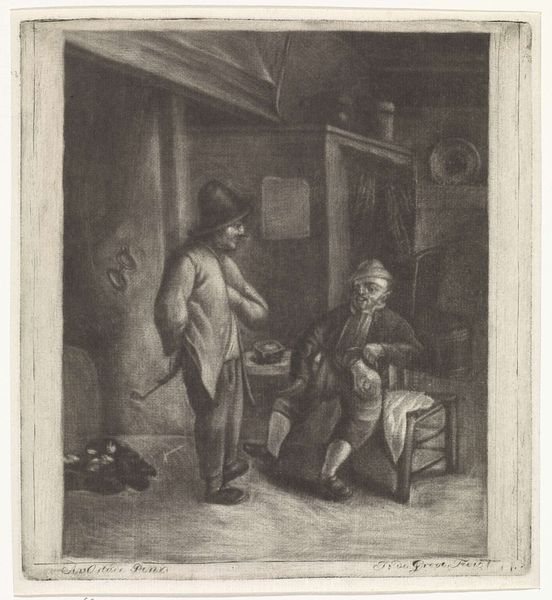
drawing, ink
#
portrait
#
drawing
#
narrative-art
#
baroque
#
dutch-golden-age
#
figuration
#
ink
#
genre-painting
Dimensions: height 180 mm, width 232 mm
Copyright: Rijks Museum: Open Domain
Curator: Jan van der Bruggen's "Kroegscène met man die pijp aansteekt," or "Tavern Scene with Man Lighting a Pipe," believed to be created sometime between 1659 and 1740, offers a glimpse into everyday life. Editor: Immediately, the stark contrast between light and shadow evokes a feeling of clandestine secrecy. There's a certain quiet, almost melancholic intimacy in the air. Curator: Precisely. The composition and use of chiaroscuro align strongly with the Baroque sensibilities, although it is an ink drawing. One immediately picks up on the symbols related to leisurely social gatherings of the Dutch Golden Age—the pipe, the cards, the ample jug. They almost become emblems for an era, don’t you think? Editor: In terms of materials, I find myself considering what locally-sourced resources were accessible at the time of the drawing’s creation. The type of ink itself offers hints about trade networks in the period. What processes are needed to prepare ink? What specific knowledge had to be present? The making of such artwork embodies local materiality and global supply chains meeting in a very specific moment. Curator: Absolutely. Also, observe how van der Bruggen carefully renders the facial expressions. Each character carries a weight. Consider the psychological import that these types of scenes represented in Dutch culture – a sense of communal ritual and identity building centered around earthly pleasures, with undertones that spoke about time, wealth, and their limits. Editor: What really strikes me, from a materialist standpoint, is that something like a tavern pipe embodies cultural consumption on a daily basis. Also, you notice what I see? What are the tools lying on the floor? I wonder, too, what sorts of hands labored to make such items and who their labor truly served. Curator: Well said. The scene does prompt considerations regarding craft, labor, class and power... What do you make of this drawing now, in our contemporary moment? Editor: It makes me ponder art and history intersecting to reveal details about lives and making often glossed over. Curator: Indeed. Looking closer always unlocks fascinating layers of continuity within history's narrative and across our humanity.
Comments
No comments
Be the first to comment and join the conversation on the ultimate creative platform.

